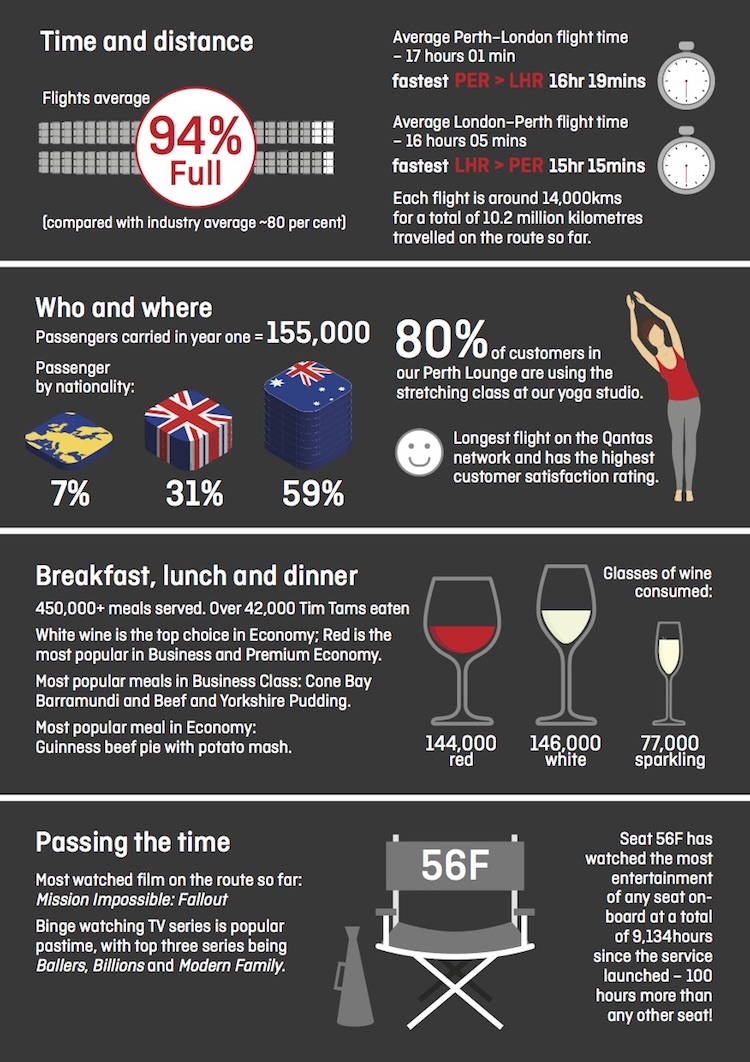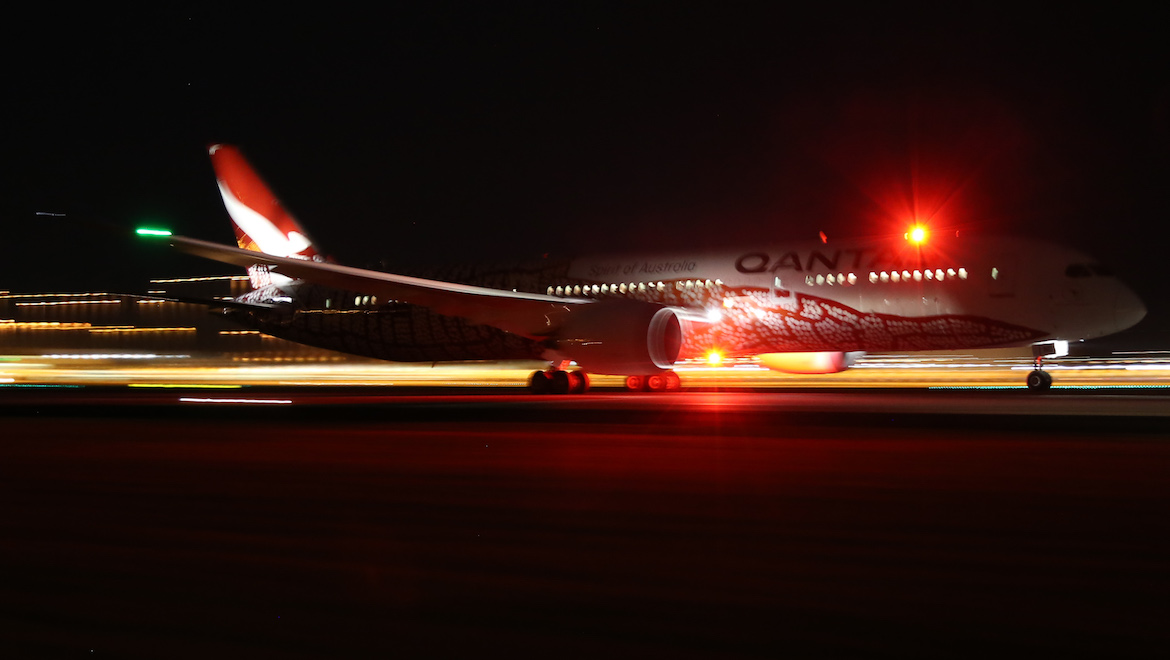
Qantas chief executive Alan Joyce says the first year of operations for the airline’s nonstop Perth-London Heathrow service has proven the concept of a Western hub for nonstop flights between Australia and Europe.
The world’s third-longest nonstop flight by distance recently celebrated its one-year anniversary, having commenced on March 23 2018 when Boeing 787-9 VH-ZND operated the inaugural QF9 from Perth and landed at London Heathrow some 17 hours later.
Figures released by Qantas on Tuesday showed that in the 10 months between April 1 2018 and January 31 2019, the QF9/10 operation carried 134,735 passengers – 67,298 on the outbound QF9 and 67,437 on the inbound QF10.
The flights achieved average load factors – an industry term for how full the flights are – of 93 per cent and 95 per cent, respectively.
VIDEO: A look at Qantas’s inaugural flight from Perth to London Heathrow
A Deloitte Access Economics report commissioned by Qantas noted passenger load factors on comparable flights between Australia and the United Kingdom ranged from 83 per cent to 86 per cent, based on Bureau of Infrastructure, Transport and Regional Economics (BITRE) data.
Perth-London Heathrow represents something of a beachhead for Qantas, with the success of the flight potentially spawning new nonstop services from Perth – described by the airline as its new western hub – to other points on the European continent.
Joyce, who was in Perth on Tuesday to mark the one-year anniversary of QF9/10, said the first year of QF9/10 showed that having a hub in Western Australia connecting Australia to the world was working really well.
“We have people coming from the east coast to join the flight and it’s made it a lot easier for people in Europe to visit Australia,” Joyce said in a statement.
“How much we grow the opportunity from here depends on all stakeholders working together.”
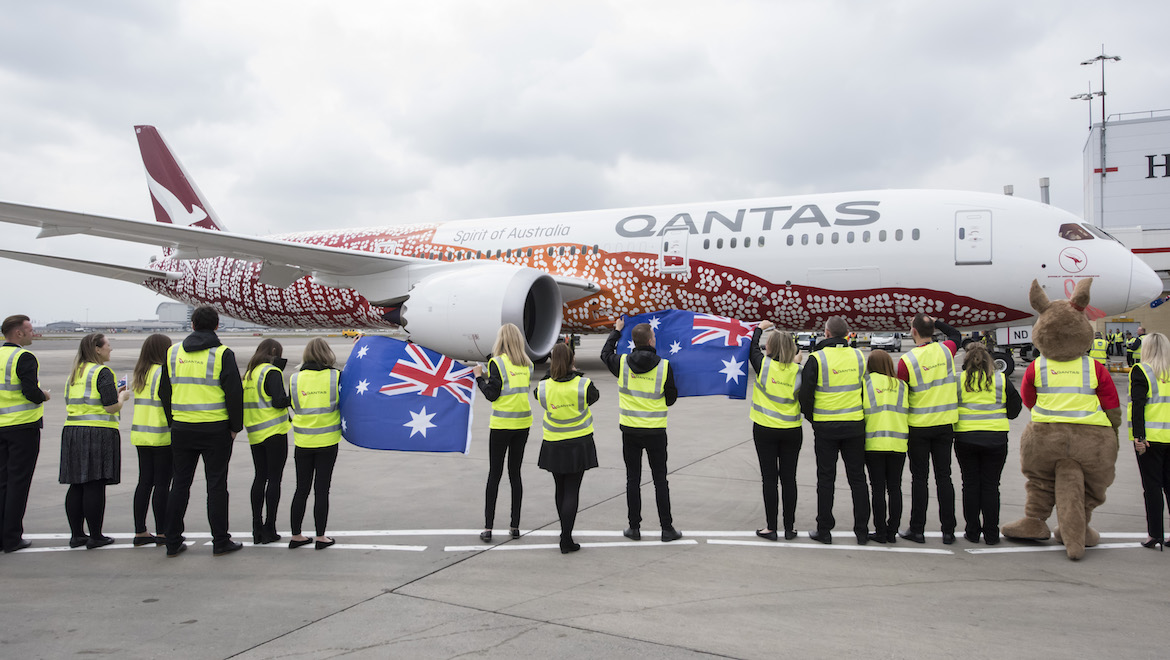
The timing any additional Qantas nonstop flights from Perth to Europe would depend on how Qantas manages its 787-9 fleet, which currently sits at eight aircraft and is expected to grow to 14 by the end of 2020.
Those additional six aircraft will lead to the withdrawal of the Boeing 747-400/400ER fleet.
Then there the current dispute with Perth Airport, which has launched legal action against Qantas in December to recover what it said were $11 million in unpaid aeronautical charges from Qantas. The airline had described the airport’s new pricing structure as “unjustified”.
Earlier in 2018, Qantas dropped plans to operate seasonal services from Perth to Johannesburg after being unable to reach an agreement over terminal access. Negotiations with Qantas to operate the Perth-London Heathrow nonstop flight from its Terminal 3/4 precinct were also hard fought.
The airport and airline are also continuing to negotiate over the terms of relocating all of Qantas’s operations at Perth Airport to an expanded international and domestic terminal precinct.
Qantas’s 787-9s feature 236 seats comprising 42 in business class in a 1-2-1 configuration offering direct aisle access for every passenger, 28 in premium economy laid out 2-3-2 across and 166 in economy in a 3-3-3 layout with 32in seat pitch and 17.2in seat width.
Some 30 per cent of seats on the 787-9 are in business or premium economy, the highest percentage of any of aircraft type in the Qantas fleet.
By contrast, Qantas’s Airbus A380s that previously operated the daily Melbourne-Dubai-London Heathrow rotation that was withdrawn in favour of 787-9 Melbourne-Perth-London Heathrow have 484 seats. The change of route has meant 248 seats per flight were removed from the market each day.
In terms of where travellers were headed, the report said 50.1 per cent of passengers travelling to London on QF9 began their journey in Perth, followed by Melbourne at 24.6 per cent and Sydney at 6.8 per cent.
It was a similar story for those arriving in Perth on QF10, with 51.3 per cent of passengers staying in Perth, 23.5 per cent flying onwards to Melbourne and 10.7 per cent going to Sydney.
Further, Qantas said about 60 per cent of passengers on the London-Perth leg were from Australia, with residents of the United Kingdom making up 31 per cent
The airline said there had been a 30 per cent increase in the total number of passengers travelling between Australia and London via Perth, including a seven per cent increase in visitors from the United Kingdom travelling to Perth.
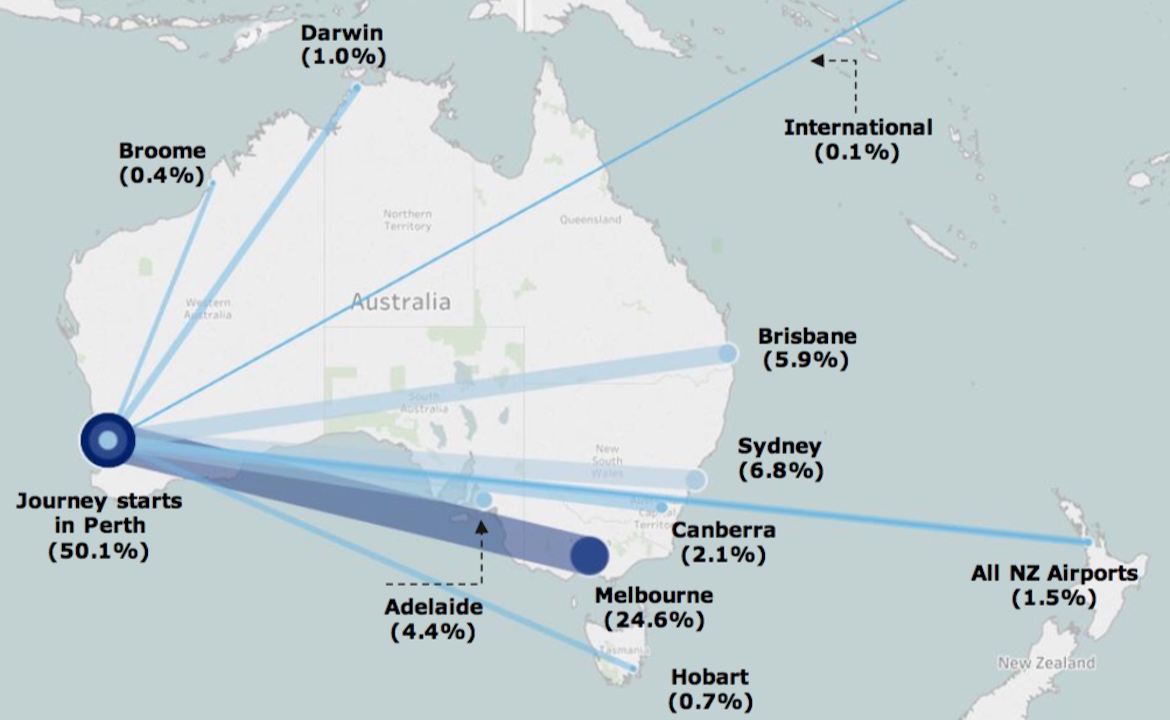
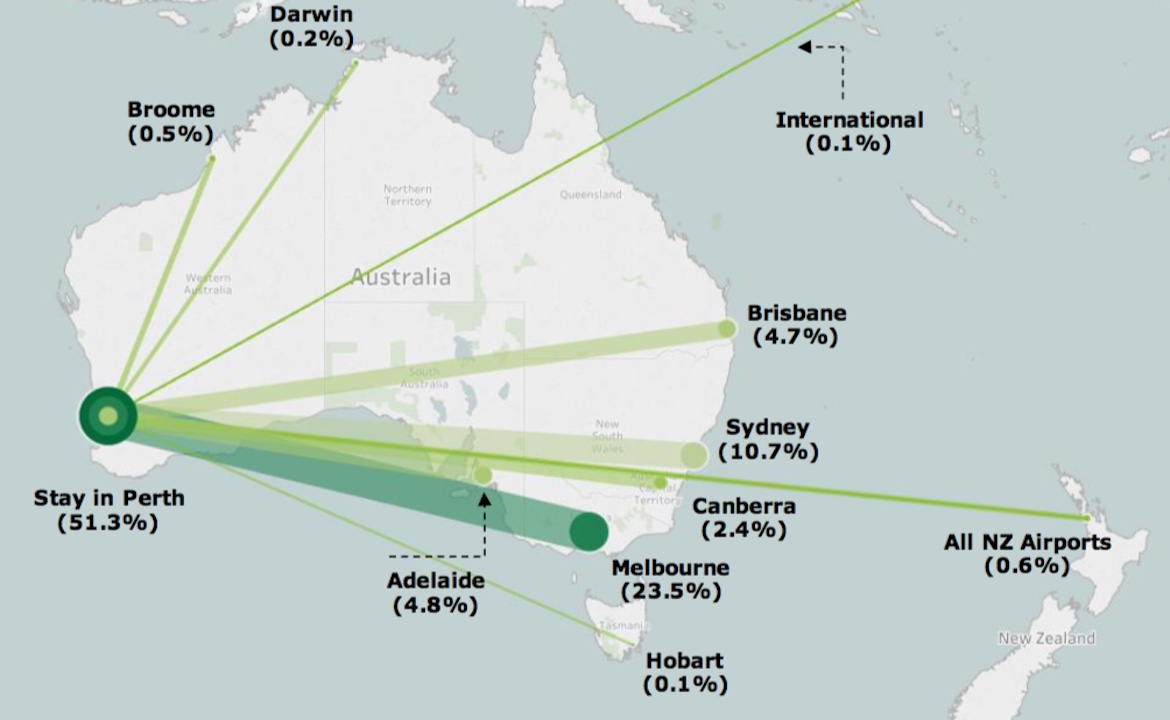
Joyce said the Perth-London Heathrow service had exceeded expectations.
“Almost every flight is full and it turned a profit almost immediately, which is rare for new services because they have start-up costs and it normally takes time to build demand,” Joyce said in a statement.
“The work we put into managing passenger jetlag and designing a comfortable cabin has paid off. It’s the longest flight on our entire network but it has the highest level of customer satisfaction.”
Operationally, Qantas said the quickest QF9 flight completed the journey from Perth to London Heathrow in 16 hours and 19 minutes, 61 minutes quicker than the scheduled journey time of 17 hours and 20 minutes thanks to favourable winds and the airline’s flight planning system.
Similarly, the quickest flight on QF10 was 15 hours and 15 minutes, well below the flight’s block time of 16 hours and 45 minutes.
“Despite all the complicated logistics and technical challenges, there have been only been four cancelled flights out of 720 planned services for a reliability rating of 99.5 per cent,” Joyce added.
“That’s a credit to the literally hundreds of Qantas people behind the scenes involved in making everything work smoothly.”
The Deloitte Access Economics report said the London Heathrow flight led to a $101.4 million economic contribution, or spending by visitors, to the West Australian economy.
“International passengers stayed an average of 22.2 nights in Perth and 5.9 nights in rest of WA, spending approximately $88 and $66 per night, respectively,” the report said.
